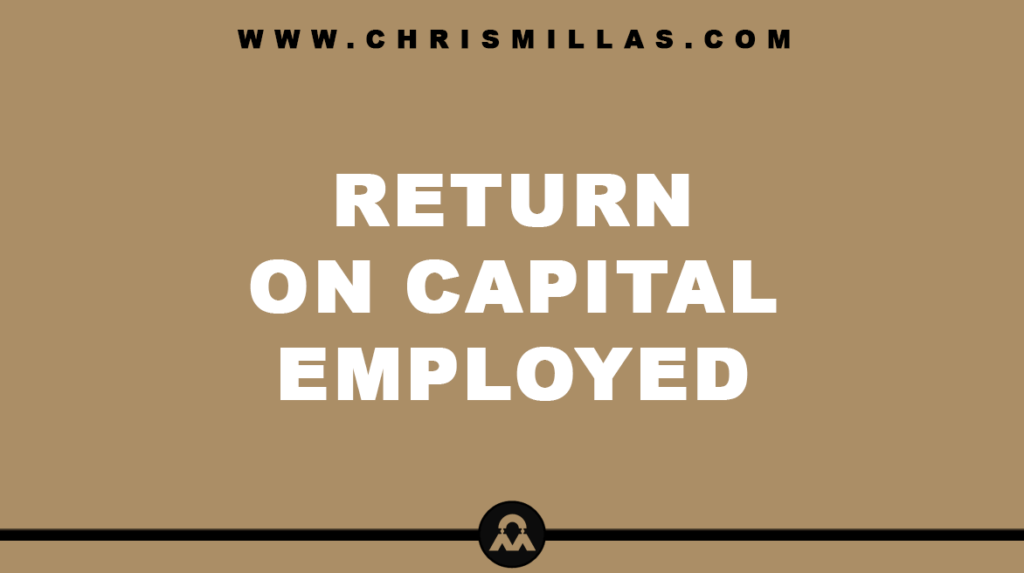In this post, we’ll unpack all you need to know about Return On Capital Employed (ROCE), defining exactly what it is, how it’s calculated, its importance in the business and investment world, how to leverage it to make informed decisions and more.
What Is Return On Capital Employed (ROCE)?
Return On Capital Employed (ROCE) is a financial ratio that measures how effectively a business is using its capital to generate profit.
How To Calculate It?
To calculate Return On Capital Employed, you simply take Earnings Before Interest & Taxes (EBIT) and divide it by Capital Employed. Capital Employed is calculated as Total Assets minus Current Liabilities.
For example, consider a company with Earnings Before Interest & Taxes of $100M, Total Assets of $300M and Current Liabilities of $50M. Firstly, we’d calculate Capital Employed as $300M minus $50M which equals $250M. Then we’d calculate Return On Capital Employed as $100M divided by $250M which equals 0.4 or 40%.
The higher the ROCE, the more effectively the business is using its capital. The lower the ROCE, the less effectively the business is using its capital.
Return On Capital Employed = Earnings Before Interest & Taxes (EBIT) ÷ Capital Employed
The Difference Between ROCE & ROIC
The main difference between ROCE (Return On Capital Employed) and ROIC (Return On Invested Capital) lies in the capital considered. While ROCE focuses on operating assets including debt, ROIC focuses on operating assets excluding debt. Thus, ROCE measured effectiveness while ROIC measures efficiency.
Why ROCE Is Important
The same way that in nature selecting for one favourable quality carries with it many other favourable qualities, is also the same way that in investing selecting for one favourable quality carries with it many other favourable qualities.
Return On Capital Employed is the single business quality that correlates favourably with many other areas of business excellence. A business that has maintained a high ROCE in any industry over any length of time is likely to carry with it many other qualities that are relevant for an investor. These include superior products and business models, an excellent management team and a strong and durable moat.
For businesses, ROCE is important because it measures capital investment efficiency and guides profitability. For investors, ROCE is important because it indicates a company’s financial health and investment potential.
How To Leverage ROCE
Businesses can leverage ROCE by identifying which projects or divisions are performing best and allocate capital accordingly as well as benchmarking against competitors and industry standards.
Investors can leverage ROCE by identifying companies that are efficiently using their capital and thereby potentially generating higher returns for shareholders.
Summary (TL;DR)
Return On Capital Employed is a financial ratio that measures a business’ ability to generate profits from its capital. It is calculated by dividing Earnings Before Interest & Taxes by Capital Employed.
For businesses, ROCE is important for making strategic capital allocation decisions. For investors, ROCE is important for analysing a business’ financial health and investment potential.







